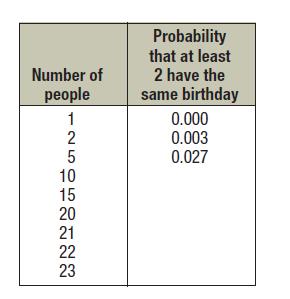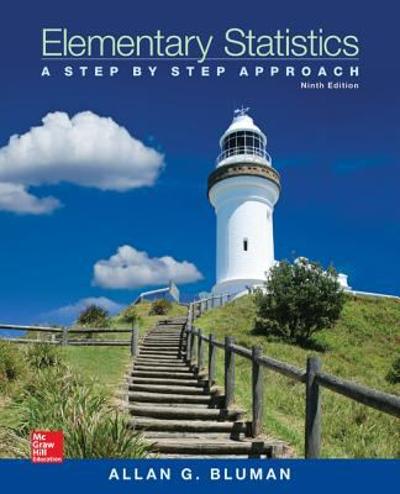Simulate the classical birthday problem given in the Critical Thinking Challenge 3 in Chapter 4. Select a
Question:
Simulate the classical birthday problem given in the Critical Thinking Challenge 3 in Chapter 4. Select a sample size of 25 and generate random numbers between 1 and 365. Are there any two random numbers that are the same? Select a sample of 50. Are there any two random numbers that are the same? Repeat the experiments 10 times and explain your answers.
Data from in Critical Thinking
How many people do you think need to be in a room so that 2 people will have the same birthday (month and day)?You might think it is 366. This would, of course, guarantee it (excluding leap year), but how many people would need to be in a room so that there would be a 90% probability that 2 people would be born on the same day? What about a 50% probability?
Actually, the number is much smaller than you may think. For example, if you have 50 people in a room, the probability that 2 people will have the same birthday is 97%. If you have 23 people in a room, there is a 50% probability that 2 people were born on the same day! The problem can be solved by using the probability
rules. It must be assumed that all birthdays are equally likely, but this assumption will have little effect on the answers. The way to find the answer is by using the complementary event rule as P(2 people having the same birthday) = 1 - P(all have different birthdays).
For example, suppose there were 3 people in the room. The probability that each had a different birthday would be
![]()
Hence, the probability that at least 2 of the 3 people will have the same birthday will be
1 - 0.992 = 0.008
Hence, for k people, the formula is
P(at least 2 people have the same birthday)
![]()
Using your calculator, complete the table and verify that for at least a 50% chance of 2 people having the same birthday, 23 or more people will be needed.

Step by Step Answer:

Elementary Statistics A Step By Step Approach
ISBN: 9780077665807
9th Edition
Authors: Allan G. Bluman





